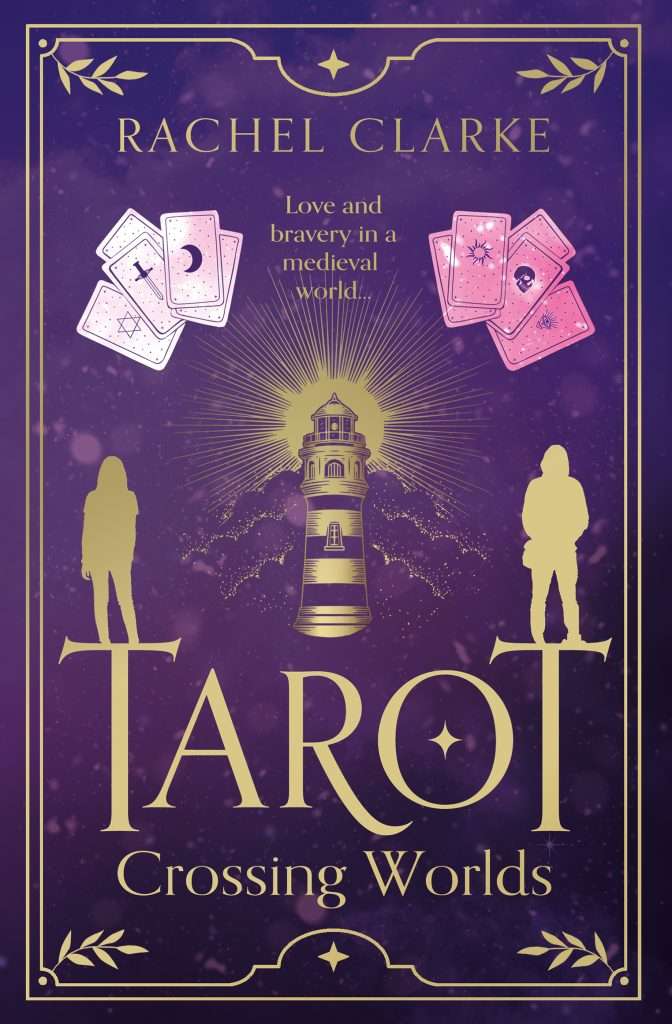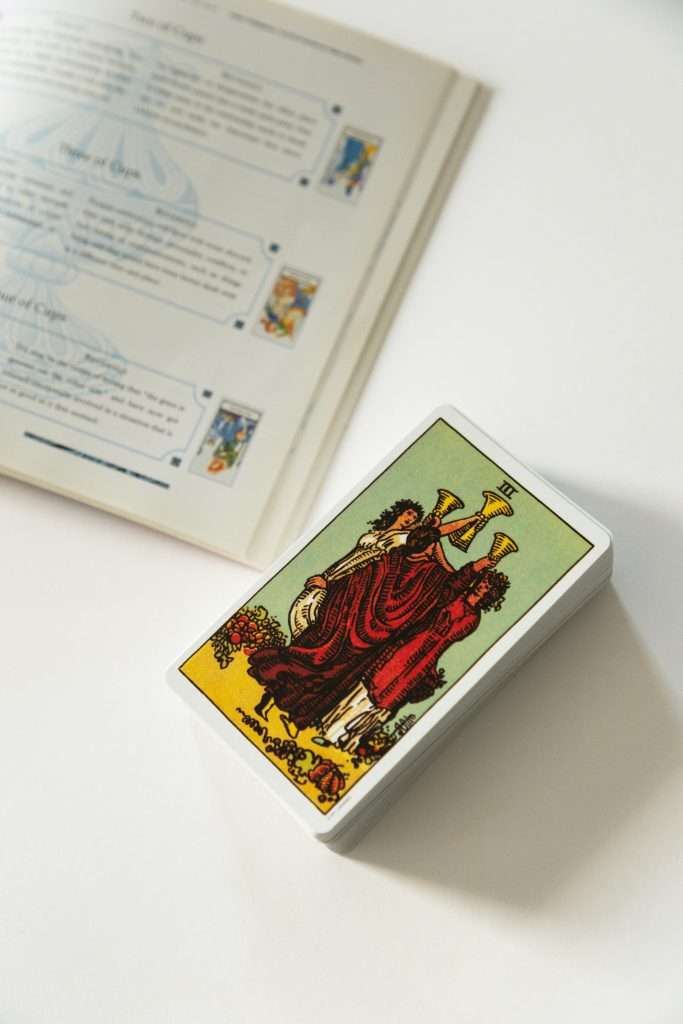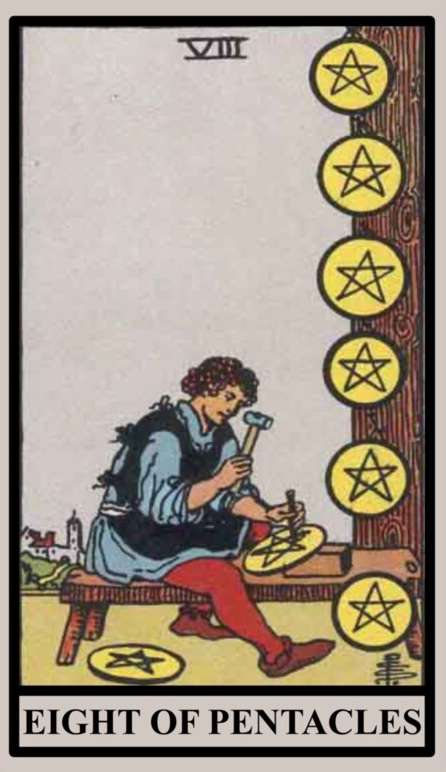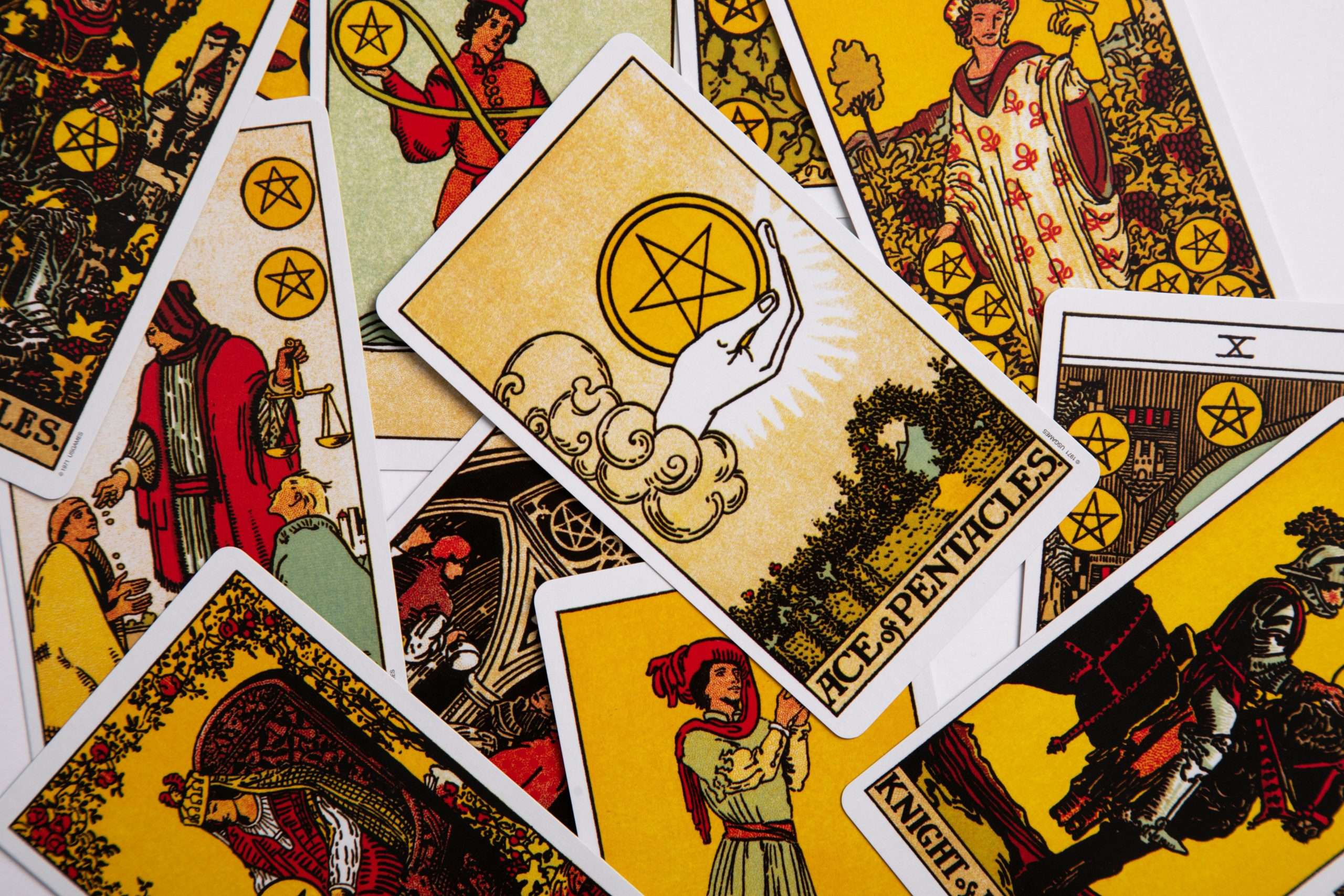With her forthcoming debut novel inspired by tarot cards, author Rachel Clarke reflects on how she used tarot cards in her worldbuilding and storytelling.

Looking at Tarot cards and delving into their meanings can be an excellent tool for inspiring creative fiction. I realised this fifteen years ago when I was a Film and Television student at Aberystwyth University. I stepped inside a local magic shop on a chance encounter in my first year. I began to wonder as I scanned the shelves, brimming with themed Tarot cards: what if a world was based on each Tarot deck, each with their own race of wondrous beings who could cross between the worlds and interact with each other?
As my interest in Tarot grew, I became secretary of the University Tarot Society. From my time there, I liked how even though there were booklets explaining the meaning of each card, individuals still had their own way of looking at things – there was never just one interpretation.

So two years ago, with time on my side to properly start and complete my debut novel, Tarot – Crossing Worlds, I wanted to create inhabitants from a range of worlds with their own unique Tarot decks. For example, I made a barbaric world called Lixus, where winged creatures settle their destiny through mystical combat, harnessing power from their cards to channel into weapons. In my novel, I also wanted to express how individual beings within the same world can interpret their Tarot decks differently; how we feel at any point in time can shape our readings. Trying to force an answer can lead to a path of self-sabotage.
Even though I had given myself the creative freedom to build and explore various characters and stories, I took time to create the overarching story. I thought about what I enjoyed reading when I was younger, especially as I wanted to make writing a novel as enjoyable and exciting as possible and for my interests to work harmoniously alongside the creative properties of Tarot.
Using myth and tarot to create a story
I love fairy tales, following heroes on daring quests, and portal-hopping fantasy books like Phillip Pullman’s His Dark Materials. I also love classical epics, especially Homer’s The Odyssey. I find myself rooting for the long-suffering hero who needed to overcome endlessly painful obstacles to reunite with their loved ones and finally banish the evil that had been invading their lives for such a long time.
So I decided to tear a family apart for my overarching story by introducing a powerful sorceress who abducts a queen’s young children. The abduction takes place on the medieval world called Wayan, where the epicentre is the exotic Island of Delqroix, home of Castle Wayan, surrounded by a deep blue crystal lake. The four magical clans that enclose the Castle, resonating with a fairytale-esque backdrop, reside on the mainland and harness and craft fantastical sorcery using the objects from their respective symbol – the Lands of Cups, Wands, Swords and Pentacles.
(Image shows the three of cups in the Rider-Waite-Smith deck)

The powerful sorceress then spirits the children through enchanted portals, leaving them on Earth with their memories erased, oblivious to their heritage. I then fast forward the narrative to twenty-one years later, where opposing magical forces are racing to claim the children, who are now adults, and must embark on a perilous quest, facing many obstacles and tribulations to save their birth mother, Queen Lillian, from the grip of a malevolent star.

After creating my overarching story and characters, I honed in on particular Tarot cards from the Rider-Waite deck that were relevant in shaping a character’s growth within smaller, self-contained obstacles. One example is the Eight of Pentacles card, which shows a focused young man sitting in the centre on a wooden bench with tools in his hands. He is etching a pentacle shape into the last of eight golden coins, while a small town is visible in the distance. He has purposely isolated himself to complete his task without distraction, becoming a skilled worker in a new craft.
After delving into the meanings, I constructed a chapter called ‘The Reward’. I placed our hero, Andrew, and his scared young Rapa called Denk, a tiny panther-like creature with raven wings and a fluffy black coat, against a magical fairytale-style backdrop. They come across a mysterious cabin called The House of Eight in the woods. The area is remote, there are no stars or light in the night sky, and it is completely cut off from the medieval world of Wayan.
From card to page
Inside, Andrew finds a dying man called Aaron, who was responsible for carving pentacle shapes into round wooden blocks with his labourer’s tools. The magic inside the blocks inspires those to reach their full potential. Andrew is tasked with taking over from Aaron, and he needs to master a new skill so that the magic blocks can be transported to homes throughout Wayan that desperately need reassurance and encouragement.

The task is not easy, and it becomes a tricky obstacle for Andrew to overcome. Trapped and frustrated, unable to move forward and become one step closer to stopping the evil responsible for tearing his family apart, he vows to keep trying. With his road to mastering a new skill, I also wanted it to symbolise his transition into learning a new path for himself, away from his past life on Earth, which ties in with the wondrous reward awarded him.
I have absolutely loved writing Tarot – Crossing Worlds, and I want to thank the British Fantasy Society for asking me to write this guest post. Those interested in delving into Tarot cards as a creative tool for fiction should start thinking about what stories they like, as this positive energy will feed into building their own unique story. As I mentioned, everyone has their own way of looking at things and so should be free to create their own worlds, beings and stories from whichever wondrous Tarot cards speak to them.
Tarot – Crossing Worlds is released by The Book Guild on 28 April.

Photos by petr sidorov, Viva Luna Studios and Airis Noyer on Unsplash.
Meet the author

Rachel Clarke, originally from Worksop, Nottinghamshire, holds a master’s degree in screenwriting from Aberystwyth University. Throughout her career she has worked as a talent coordinator for production agencies in Canada and London. She was a script reader for Tiger Aspect and a production coordinator for Lime Pictures. She now runs a successful company helping screenwriters worldwide succeed in developing their film projects. She lives in Aberystwyth, Wales.
Discover more via her website, rachelclarkeauthor.co.uk


Leave a Reply